The Real Truth About
Cell Phone Signal Boosters
Signal boosters are a great way to eliminate weak signals and dropped calls for any mobile device user who already has a signal outside of their home, office, car or RV, or commercial building up to 100,000 sq ft. Every application is unique based on the signal strength outside of the building, the organic and manmade surroundings, the number of users, and overall user needs. This being the case, it's important to understand what you need and what you're buying before you buy it.
This guide has everything you will need to know to make the right booster purchase for your needs and we encourage you dive-in and contact us if you have any questions along the way. As you're reading, keep in mind that you should expect your mobile network booster manufacturer to be FCC-Approved and offer a warranty or money-back guarantee. SureCall signal boosters are FCC-Approved and every purchase comes with Lifetime Support, a 3-Year Warranty, and a 90-Day Money-Back Guarantee.
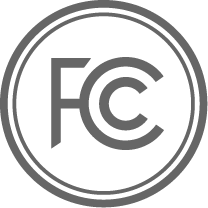
FCC Approved
Booster
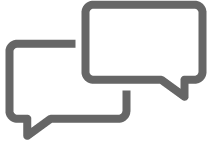
Lifetime
Support

Industry Best
3 Year Warranty

90 Day Money
Back Guarantee
Find What You're looking for:
Booster Basics for Cell Phones
- What is a Cell Phone Signal Booster
- Top Benefits of a Cell Phone Signal Booster
- How Cell Signal Boosters Work
- Why You Have Bad Cell Reception and Dropped Calls
- Choosing an Outdoor Antenna
- Choosing an Indoor Antenna
- Choosing a Signal Amplifier for Car, Truck, or RV
- Choosing a Signal Amplifier for a Small Home or Office
- Choosing a Signal Amplifier for a Large Home or Office
- Choosing a Signal Amplifier for Commercial Spaces
Answers to Most Common FAQ
- Best Signal Booster Kits for AT&T, Verizon, Sprint, T-Mobile, and All Major Carriers
- Alternatives to a Cell Phone Signal Booster
- Understanding What Cell Phone Reception Bars Mean
- How To Test Your Cellular Signal Strength
- Get to Know 2G, 3G, 4G LTE, & 5G Signals
- Voice Over LTE (VoLTE)
- Understanding Remote Monitoring
- Guide Summary
- See A Recent Customer Example
- Cell Signal Booster Terms You Should Know
- Additional Information
- Contact an Expert
Booster Basics for Boosting Cell Phone Signals
What is a Cell Phone Signal Booster
Cell phone signal boosters work by capturing a signal outside or nearby to your building and repeating that signal inside of your home, apartment, office, commercial space, car, truck, or RV. As a best practice, if you can make a phone call at any single location outside of your building, a cell phone signal booster will work for you. Even if you cannot, we can often customize your booster kit in such a way that it will. Boosters have no recurring fees, support all carriers, can be simple to install, and are a great way to get rid of dropped calls and bad cell reception for spaces between 10 and 100,000 sq ft.
- Eliminates Dropped Calls
- Improves Cellular Reception
- Crystal Clear Call Quality
- Improves Data Speeds
- Support Multiple Users
- No Recurring Fees
- Support for All Carriers
- Expands Coverage Area
- Extends Cell Phone Battery Life
Why You Have Bad Reception & Dropped Calls
Bad reception and dropped calls are the result of different factors working both independently and together. These factors include distance from a cellular tower, user capacity for a cellular tower, and impediments between you and the tower such as geographic features (hills, mountains, rocks), organic features (trees, leaves, snow-pile), weather conditions (rain, snowfall, wind, dust), manmade structures (buildings, walls, fences), and conductive materials (copper, aluminum, salt water, and anything else that can conduct electricity). All of these can have a negative impact on the quality of your cell signal but, in most cases, a signal booster will be able to overcome these obstacles.
How Does a Cell Signal Booster Work?
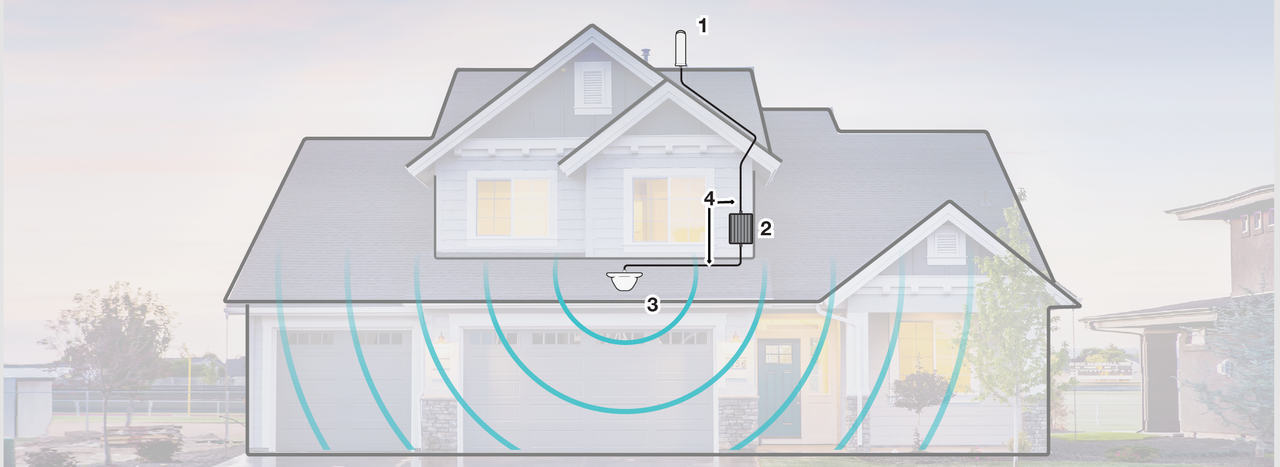

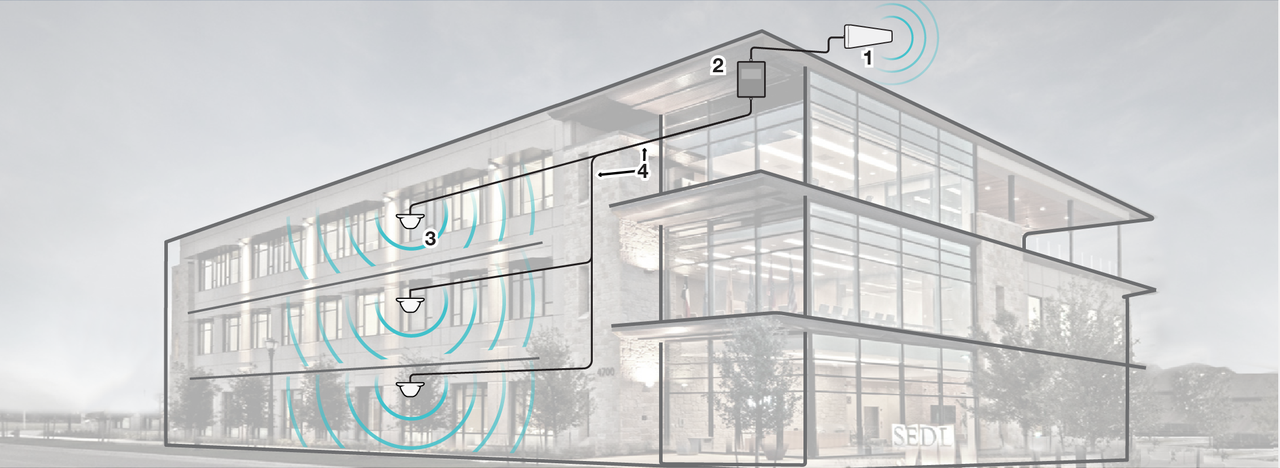
A cell phone signal booster captures a nearby cellular signal, amplifies it, and broadcasts that signal in the space that needs a better cell phone signal. Signal booster kits work for small and large homes, offices, apartments, commercial buildings, and even cars, trucks, and RVs.
Regardless of the space, the specific components of a cell phone booster include:
- Outside Antenna - Installs on the exterior of your building in the location that receives the strongest signal from a nearby cell tower. This captures the strong signal outside of the building and pulls it into the building.
- Signal Booster - Receives the signal from the outside antenna and amplifies the signal strength before sending the improved cellular signal to the indoor antenna(s).
- Indoor Antenna(s) - These are installed inside of the building to distribute the amplified signal throughout your building or vehicle. Some buildings may require multiple indoor antennas and/or multiple boosters.
- Cables - Connects the outdoor antenna with the booster and the booster with the indoor antenna.
Choosing an Outdoor Antenna
There are a few key considerations that will drive your decision to buy a kit with a directional antenna or omni-directional outdoor antenna. The top on the list include the quality of your signal outside, the number of carriers that you need to boost, and whether the space is in-motion, like an RV, car or truck, or stationary, like a house, apartment, or office.
- Directional Antenna (Yagi Antenna)
Directional antennas are most often referred to as Yagi antennas. These outdoor antennas use a reception window pattern most similar to a flashlight. With a 50-degree window of reception, these antennas are built primarily to access one specific cell phone tower and can also capture omni-like signals from other cell towers that may not be in the antennas window of reception. Because of their more focused window of reception, Yagi antennas are able to reach significantly more distant cell phone towers than omni-directional antennas. A yagi antenna is best for stationary spaces, like homes, buildings, and apartments that have a weak outside signal and a relatively clean line of sight to a cell phone tower that is within 20-miles of you. Shop Outdoor Antennas. Shop Outdoor Antennas. - Omni-Directional Outdoor Antenna
Omni-Directional antennas use a reception pattern most similar to a lantern's glow. With this signal receiving pattern, omni-directional antennas are designed to access multiple towers simultaneously to turn a weak cell phone signal into a strong signal. We suggest using an omni-directional antenna if you have a moderate to strong signal outside of a stationary home, office, or apartment and also for in-motion spaces like cars, trucks, and RVs. Shop Outdoor Antennas.
Choosing an Indoor Antenna
Generally, there are three primary indoor antennas: panel antennas, dome antennas, and whip antennas. SureCall boosters are kitted with indoor antennas that will provide the best coverage for that booster but, occasionally, some kit customization may be needed.
- Panel Antenna
Best suited for long, rectangular spaces and multi-floor homes, apartments, or buildings. Panel antennas can be installed on walls and ceilings without requiring access behind the ceiling or wall. They simply screw into the surface and transmit a beam-like signal that varies in angle but most commonly ranges around 45-degrees. - Dome Antenna
Best suited for single-floor spaces that are more square shaped. Dome antennas install on the ceiling and transmit a glow-like signal downward and to the sides of the antenna. To install a dome antenna you will need access to the space behind the wall or ceiling. - Whip Antenna
Best suited for repeating a signal in one room or a handful of small rooms. Whip antennas are small and attach directly to the booster. These radiate signal outward in all directions and typically only accompany entry- to mid-level systems. We suggest these for small spaces, cars, trucks, and RVs.
Choosing a Signal Amplifier for Car, Truck, or RV
Signal amplifier options for a car, truck, or RV are small and easy to install. The ideal booster for a single driver in a sedan will not be the same as the perfect choice for the family of four that is road-tripping in their SUV or RV. The SureCall Fusion2Go 3.0 is available as a kit for vehicle or RV and is the industry’s most powerful signal booster for cars. The SureCall FusionTrek is a single-user signal booster that has no outside antenna and is the easiest-to-install booster on the market. The Fusion2Go 3.0 and FusionTrek both boost 2G, 3G, and 4G LTE signals for AT&T, Verizon, T-Mobile, Sprint, Telus, Rogers and any other North American carriers and phones.
Choosing a Signal Amplifier for a Small Home or Office
A signal booster for a small apartment, home, or office can help you avoid having to run outside or stand by a window to answer calls or send texts. The award-winning SureCall Flare is an all-carrier voice and 4G LTE signal booster with integrated indoor antenna that supports spaces like homes or cabins up to 2,500 sq ft. The SureCall EZ 4G boosts 4G voice and data in spaces up to 2,000 sq ft without the need for an external antenna. The Fusion4Home similarly amplifies 4G signal in a space of up to 4,000 sq ft.
Choosing a Signal Amplifier for a Large Home or Office
Maintaining talk and text service in a large home or office can be challenging. Everything from construction materials to sheer size can turn parts of your space into dead zones. In most cases, a signal booster can deliver a better voice, text, and data experience throughout your office. The SureCall Fusion5s boosts voice, text, and 4G LTE data signals for buildings of up to 6,000 sq ft. The FlexPro is a more basic and cost-effective signal booster, also for spaces of up to 6,000 sq ft. For big jobs, choose the mighty Fusion5X 2.0, which is the industry’s most powerful signal booster in its class for amplifying 3G and 4G LTE signals up to 20,000 sq ft.
Choosing a Commercial Booster for Large Buildings
Commercial spaces present their own unique challenges for cell phone reception. The size of the building, distance from the cell towers, and construction materials used can turn a hot cellular spot into a dead zone, even in the middle of urban areas. The multi-award-winning SureCall Force5 2.0 is an easy-to-use commercial voice, text, and 4G LTE signal booster that uses four indoor antennas to support spaces up to 25,000 sq ft. Force5 2.0 systems can be expanded with multiple indoor antennas and boosters to deliver coverage to much larger spaces. The Fusion7 is the first ever all-in-one signal booster that increases cellular, Wi-Fi, and HDTV reception in large spaces of up to 20,000 sq ft. The Force7 Industrial is a perfect solution for larger installations such as schools, hotels and healthcare facilities. This powerful booster requires carrier approval and can amplify indoor cell phone, Wi-Fi, and HDTV signals for up to 20,000 sq ft of coverage and 100+ simultaneous users.
Best Signal Booster Kits for AT&T, Verizon, Sprint, T-Mobile, and All Major Carriers
Choosing the perfect signal booster can be a frustrating exercise in juggling brands, carriers, and technical information. Popular devices like femtocells are offered by cell providers and can boost specific signals. But these devices typically require monthly fees, can be a security risk, and anyone in your home or office outside of a certain carrier does not get the benefit. Choose a booster that amplifies the signal for all carriers, like SureCall's Fusion4Home, Fusion5s, or Flare. These devices are easy to install, simple to use, and increase voice, text, and 4G LTE data for all North American providers.
Alternatives to a Cell Phone Signal Booster
- What is a Microcell?
Also called a femtocells, microcells create a cellular signal by using a broadband Internet connection. These can be purchased through your cellular carrier ($100-$300) and require a monthly subscription that will be added onto your Internet bill. Microcells work well for small spaces (1-2 rooms) where there is no cell signal outside of the building. - What is a DAS?
Distributed Antenna systems (DAS) are high involvement solutions designated for large applications that exceed 100,000 square-feet and host a large number of users. This is the most likely solution for stadiums, convention centers, airports, hospitals, and gigantic office buildings. DAS requires approval from the FCC and all carriers that have nodes on towers that service the area. - Cell Phone Antenna Cases & Stickers We often deter customers from these solutions as they typically boast higher levels of performance than they actually deliver. Unfortunately, these are too good to be true.
- Who is the Best Carrier for Cell Coverage?
Based on cellular reliability for the United States, the ranking holds Verizon at the top, then AT&T, T-Mobile, and Sprint. It's important to note that all of these carriers have more than 90% coverage in the United States, which is pretty darn good. Because reception varies significantly from city to city and even house to house, we suggest using cell reception to locate the towers closest to you and see what people have to say about their service in that area.
FAQs About Signal Boosters
What Cell Phone Bars Actually Mean
Cell phone bars are inaccurate indicators of signal strength. The reason for this is that there is no standardized scale, rather, each phone manufacturer makes up their own arbitrary algorithm. This being the case, we suggest testing your cellular strength yourself. Fast-forward to the next section to learn how!
How To Test Your Cellular Signal Strength
Websites like Cell Reception and Antenna Search or applications like OpenSignal (Android | iPhone) and Network Signal Info (Android) are easy ways to find towers and get a general reading of your cell phone signal. For larger installations we suggest using an RF Signal Meter to get a pin-point precision reading. The approach we suggest for our small- to medium-size home and office owners is field test mode.
- How to Enter Field Test Mode for iPhones Not Running iOS 11
- Go into your Settings / WiFi / Turn Off WiFi
- Check your iOS and:
- For iOS 9.3 and later go to Settings > Cellular > Cellular Data Options > Enable LTE > Turn Off LTE
- For iOS 9.2 and earlier Settings > Cellular > Enable LTE > Turn Off LTE
- Make a phone call to *3001#12345#* and press call
- How to Enter Field Test Mode for iPhones Running iOS 11
- Go into your Settings / WiFi / Turn Off WiFi
- Check your iOS and:
- For iOS 11 and later go to Settings / Cellular / Cellular Data Options / Enable LTE / Turn Off LTE
- Make a phone call to *3001#12345#* and press call
- Select Serving Cell Measurements and refer to the top item named Measured RSSI
- How to Enter Field Test Mode for Android
- Settings > More Options or More Settings
- Tap on About Phone > Mobile Networks > Signal Strength
- Under Signal Strength you will see your dB reading. If you do not see it there you will see it under Network Type or SIM Status.
How To Get a Better Cell Phone Signal
View our infographic for 10 free tricks to improve your cellular signal.
- Don't Block the Antenna
Remove your cell phone case and don't hold the sides of your phone. Most smartphones tuck the antenna inside of the phone and holding the sides of your phone can dull the antenna's ability to receive and transmit RF signals. - Remove Obstructions
Go outside, stand by a window, open a window, get away from metal surfaces and walls, distance yourself from other users, and get to a higher level that has less surrounding structures (trees, mountains, other buildings, etc.). The fewer obstructions between you and a cellular tower, the better your signal will be. - Charge Your Device
As your cell phone battery loses power the amount of energy it can use to access cellular towers also decreases. Putting your phone on airplane mode while charging can help speed up the charging process. - Close Unused Apps and Pages
Closing the apps and pages you have running in the background enables your mobile device to devote all performance to the action at-hand. - Airplane Mode to Reset
Turn airplane mode on for 3+ seconds then turn it off to reboot your cell signal and try to connect to a better, stronger tower. - Cell Phone Signal Booster
Signal booster are typically carrier agnostic and one system can support all carriers. Cellular signal boosters will use an antenna to grab a signal outside of your building and, with the booster and internal antenna(e), will amplify and repeat that signal within the structure to give you a great cell connection throughout. These range in price based on the square-footage of the application. A signal booster for a 5,000 square-foot application will cost a few hundred dollars whereas an 80,000 square-foot application could require a booster that cost a few thousand. - Evaluate Your Cell Phone Signal
Websites like Cell Reception and Antenna Search or applications like OpenSignal (Android | iPhone) are easy ways to find towers and get a general reading of your cell phone signal. The approach we suggest for our residential customers is field test mode, which gives an exact reading for your specific device at that specific moment. For larger installations we suggest using an RF Signal Meter. - Wi-Fi Calling
If you are connected to the Internet applications like FaceTime Audio, Skype, and Google Hangouts allow you to call over Wi-Fi rather than cellular. Alternatively, you can enable Wi-Fi calling directly on your iPhone (Settings > Cellular > Turn On: Wi-Fi Calling) and Android (Settings > Wireless & Networks: More > Activate Advanced Calling) devices. - Femtocells
Also called Microcells, femtocells use a broadband Internet connection to create a cellular base station that can cover a small space. These can be purchased through your cell carrier, cost between $100 and $300, and require a monthly fee that accompanies your Internet bill. These are great solutions for homes or small offices where there is no cell signal outside of the building and where cell usage typically occurs within one or two small rooms within the building. - DAS
This is a much more involved solution designated for large applications that exceed 100,000 square-feet and host a large number of users. These applications require approval from the FCC and carriers on nearby towers and, while costs range based on the size of the application, we would not suggest this option for most homes or small businesses. - Consider a New Carrier
If all else fails, you may want to consider dropping your carrier and starting a plan with the carrier that provides more reliable cellular coverage for your most frequented areas. Cell Reception is a great service that helps you locate nearby cell towers and hear what people in your area have to say about their reception with those carriers.
Will a Signal Booster Work When I Have No Cell Service?
If you have cellular service readings between -50 dB and -103 dB outside of your building, a signal booster should be able to improve your signal inside of the building. On the other hand, if your best signal reading outside of the building is between -104 dB and -150 dB and you do not have a clean line of sight to a cellular tower that is within 20-miles of your building, there is no signal booster, regardless of manufacturer, that will be able to boost your signal. Learn how to get a signal reading.
How to Use Wi-Fi Calling on Your Cell Phone
WiFi calling is a temporary workaround if you have no cellular reception but a strong Wi-Fi signal. It is important to note that without a strong internet signal, your call could drop or suffer from low-quality audio. To use Wi-Fi calling, you can download and run an application like FaceTime Audio, Skype, or Google Hangouts. You can also activate Wi-Fi calling on your iPhone by going to Settings > Cellular > Turn On: Wi-Fi Calling and for Android devices tap Settings > Activate Advanced Calling.
Is Weak Reception Draining Your Cell Phone Battery?
Yes. When you are standing next to a cell phone tower and have perfect reception your phone doesn't have to expend much energy to get great reception. On the other hand, when you have a weak cell phone signal your phone must use more energy to access a stronger signal, which draws from your cell phone battery.
Get to Know 2G, 3G, 4G LTE, & 5G Signals
- What is 2G?
Introduced in the early 1990s, 2G is the second generation of cellular technology, and moved mobile devices from analog to digital. This enabled carriers to provide data service — text and picture messages — for the first time. Carriers in the United States are shutting down their 2G service, although many will remain functional through the decade. While updating to more broad and secure standards is recommended, a signal booster like SureCall's Fusion4Home will help amplify 2G service through its remaining life while also supporting 3G and 4G LTE. - What is 3G?
The third generation of mobile communication technology, 3G first became commercially available in the early 2000s. It introduced mobile internet access, video calls, and mobile TV to consumers. Although still prevalent today, 3G has been superseded by 4G LTE and will begin to further disappear as new standards are developed. A signal booster like SureCall's Fusion4Home will help amplify 3G service through its remaining life while also being compatible with 2G and 4G LTE. - What is 4G LTE?
4G LTE service is the current cellular standard. This system moved mobile devices to true internet access, enabling faster mobile web, gaming, internet telephone, and high-definition video. 4G LTE is the most advanced commercial standard to date and available around the world. Even so, factors like construction materials and distance from cell towers often compromise connectivity. A signal booster like SureCall's Flare will help assure signal strength. - What is 5G?
Mobile “generations” change roughly once every decade, and the dawn of 5G is still over the horizon. Along with technical improvements like increased coverage, super-fast mobile networks, and support for device-to-device applications, 5G standards will allow devices to use less battery and allow a much greater number of broadband users. Research and development is well underway, with the arrival of 5G expected in the early 2020s.
What is Voice Over LTE (VoLTE)
VoLTE gives you access to more bandwidth thereby giving you higher quality audio. This allows you to place a phone call over your LTE connection rather than the older 2G and 3G networks, thus the name “voice over LTE.” Often called “true 4G” your ability to use VoLTE depends on your carrier:
- AT&T has shut down their 2G network and now runs exclusively on their 3G and 4G LTE networks. AT&T users can access the VoLTE network when signal is available.
- Verizon users can make calls over VoLTE when signal is available. Verizon plans to terminate their 2G network in 2019.
- T-Mobile was the first carrier to deploy VoLTE across the United States. T-Mobile customers can call over VoLTE when signal is available
- Sprint is not VoLTE capable and currently relies on the 3G network for all calls.
Remote Signal Monitoring Software
Remote monitoring benefits business owners, managers, or installers who require continuous up-time. Whereas some booster manufacturers allow you to “remote monitor” to view the health of your system before performing on-site adjustments, SureCall Sentry™ Remote Monitoring System allows you to gauge the system's performance and manually tune the amplification and output power for each band via the Sentry web portal or applications for Android and iPhone. Remote monitoring comes standard on the Force5 2.0 booster.
Customer Example
Modern hospitals, like the Kaiser Permanente San Jose Medical Center, are becoming increasingly more dependent on cellular devices for communication with one another. When lives are at stake, dropped calls and sluggish data speeds are simply not an option. This full-service hospital is operated by 400 physicians and nearly 3,200 nurses that serve California’s Silicon Valley.
This massive and strongly-constructed hospital building made it difficult for cellular signals to penetrate through to the lower floors. Readings on floors one and two fluctuated between one and two bars and, according to hospital staff, dropped calls were a frequent concern. When teams needed to call a surgeon or doctor, send x-rays via mobile device, or receive advanced notice of an incident that would require additional staff, they needed total confidence in their cellular signal.
RepeaterStore’s RSRF Division used a Passive DAS system that included 8 SureCall Force5 signal boosters and 32 SureCall Dome Antennas to deliver reliable cellular signal to both floors of the hospitals 300,000 sq ft of coverage area.
The San Jose Kaiser Permanente hospital was so pleased with the results of the Force5 passive DAS that they added additional dome antennas to a new wing of the building in the basement. The hospital has been more than pleased with the installation and is reassured in knowing their teams are better connected and, in turn, more able to keep their patients safe and staff nimble enough to act at a moment’s notice.
Guide Summary
In order to benefit from a cell phone signal booster, you must already have cellular reception outside or nearby your building. If you are able to make a call at any point outside of your building or if there are cellular towers within 20-miles of your building, generally a signal booster will be able to help. SureCall offers lifetime support, a 3-year warranty, and a90-day money-back guarantee to make sure your solution works well into the future.
A cellular signal booster can eliminate dropped calls, improve audio quality, boost data speeds, expand coverage area, and extend cell phone battery life. Boosters are compatible with all carriers, support multiple users simultaneously, and have no recurring fees.
Ask these questions to make the right purchase for you:
- What is the quality of my signal outside of the building? We suggest small to medium buildings use Field Test Mode and larger buildings use an RF Signal Meter to get an accurate signal reading.
- Which cellular carriers do I need to boost?This can have an impact on the outdoor antenna that will work best for your space. Need to boost all carriers? Most of the time we suggest an omni-directional outdoor antenna. Boosting primarily one carrier? Typically a directional (yagi) antenna should do the trick because you can point it straight at one cellular tower and the antenna will capture all signals from that tower while also receiving other signals from nearby towers just like an omni antenna. Here’s a guide to choosing the right outdoor antenna.
Signal Booster Terms You Should Know
- Radio Frequency (RF)
The signal wave frequency used to transmit cellular, AM and FM radio, and Wi-Fi signals. - Gain
The higher the gain, measured as a positive number, the more a signal is amplified. Boosters, indoor antennas, and outdoor antennas each produce gain to create a combined, total gain value. - Loss
The lower the negative number, the more loss will occur. Loss works against gain and, for example, if you have an overall 25 dB of gain and -5 dB of loss it would result in an overall gain of 22 dB. This is addressed in our complimentary design services. - Decibel (dB)
The unit of measurement used to indicate cellular signal strength. Written in negative numbers, the further the number is from 0, the weaker the signal, with -50 dB being a perfect cellular signal. - Active DAS
Active DAS is a distributed antenna system that uses fiber optic cables and requires the system generate a cellular signal, rather than amplifying an existing signal outside of the building. - Passive DAS
Passive DAS is a distributed antenna system that uses a bi-directional amplifier (or signal booster) and does not require fiber optic cables. These systems take the signal outside of the building and amplify that signal indoors. - Dual In-Line Package (DIP) Switch
DIP switches refer to the individual switches on a booster that are used to manually adjust uplink and downlink attenuation. - Wideband
Also known as carrier neutral or carrier agnostic, this is the term used to define a booster, repeater, or amplifier that covers all bands of the RF spectrum. A wideband booster will support coverage for AT&T, Verizon, T-Mobile, Sprint, and all other carriers. - Received Signal Strength Indicator (RSSI)
RSSI is the measure of RF signal strength that a building is receiving from an access point, like a cellular tower. - Donor Signal
The signal that the booster is boosting, repeating, or amplifying. This is the signal being received from the cellular tower. - Broadcast Signal The signal that is generated by the booster and distributed to the inside of a building or vehicle.
- RF Band
Produced by cell towers, these sub-sections of the RF spectrum include cellular, PCS, AWS, and LTE. - Attenuation
Reduction in the signal strength of a signal either through natural or forced means. You may want to attenuate a booster if a donor signal is too strong or too weak by adjusting the dip switches. - Attenuation
Reduction in the signal strength of a signal either through natural or forced means. You may want to attenuate a booster if a donor signal is too strong or too weak by adjusting the dip switches. - Oscillation
Also called feedback, this occurs when the outdoor and indoor antennas are installed too close together. This causes the booster to rebroadcast one set of signals between the two antenna, progressively getting louder and louder until the booster enters sleep mode. Oscillation can be resolved by creating distance between the indoor and outdoor antennas.
Additional Information

Indoor Antenna Guide

How to Enter Field Test Mode

How to Improve Your Cell Signal

Outdoor Antenna Guide
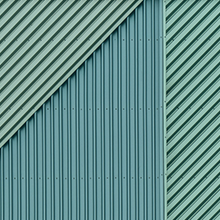
What Blocks a Cell Phone Signal?
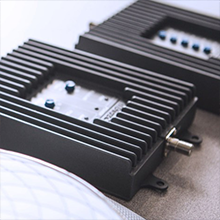
What is Attenuation?
Contact an expert
To get in touch with one of our technical experts, submit the form below or give us a call at (888) 365-6283.

FCC Approved
Booster
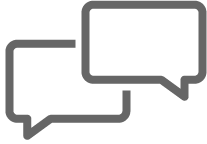
Lifetime
Support
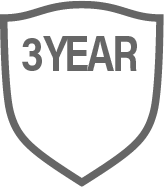
Industry Best
3 Year Warranty

30 Day Money
Back Guarantee
